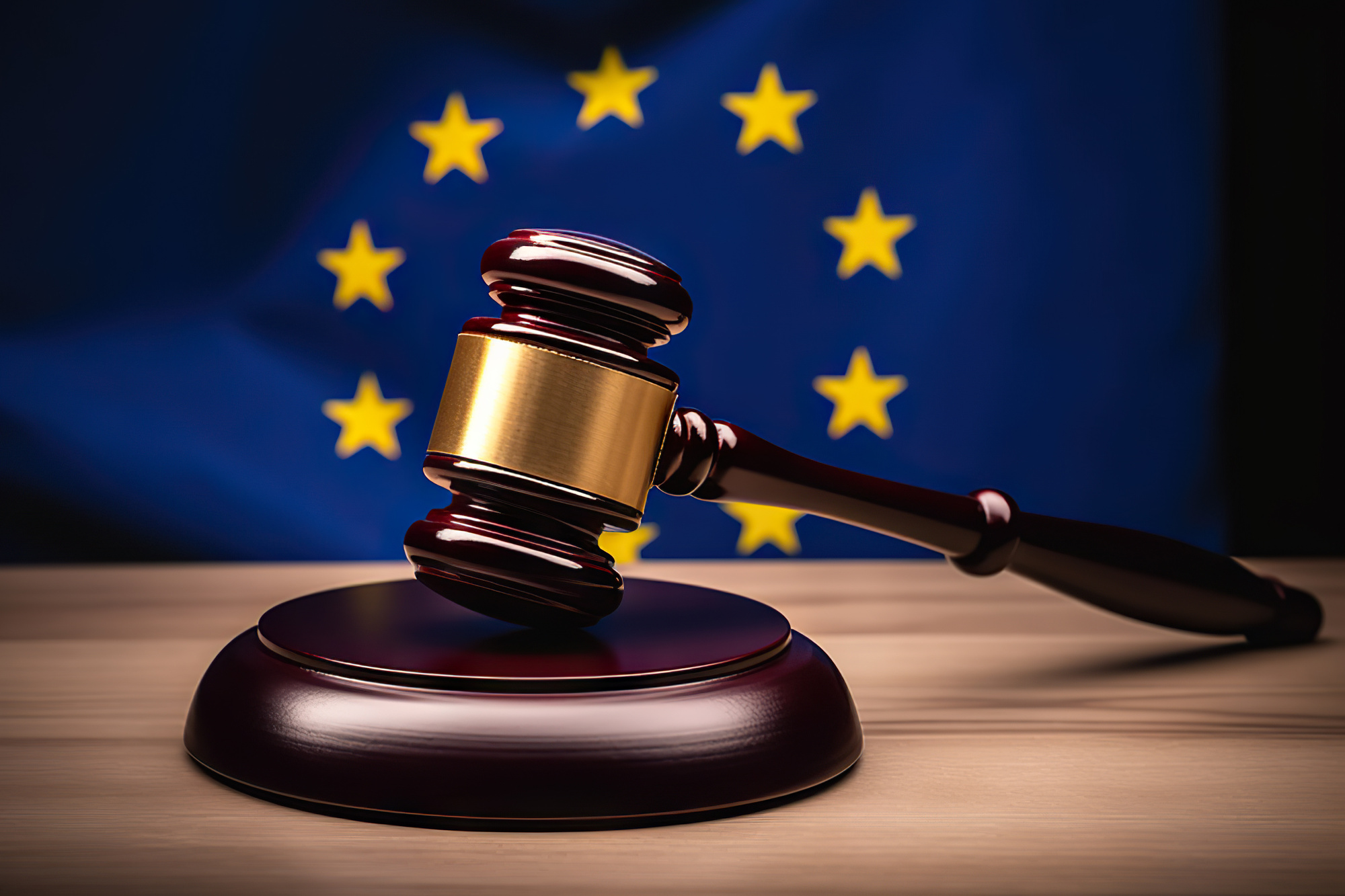As a compliance officer, it is likely that you will encounter a conflict of interest every so often. With large organisations and complex structures, the threat of a conflict of interest is always present. Knowing how to manage this is essential to maintaining the reputational integrity of the business and remaining on the right side of the current legislation.
As American economist Thomas Nixon Carver said, conflicts of interest are common, but resolving them is key:
“The need for justice grows out of the conflict of human interests. That is to say, if there were no conflict of interests among mankind, we should never have invented the word justice, nor conceived the idea for which it stands.”
Read this article to find out more information on how to bring justice to your organisation and deal with conflict of interest ethically.
1. What is considered a conflict of interest?
Conflicts of interest occur in a number of ways in the business world. Usually, they refer to individuals benefiting from something that is detrimental to the company they work for or its clients. Here are some of the most common types of conflicts of interest:
| Type | Description |
| Self-dealing | Where a management figure, advisor or other fiduciary provides advice that is in their best interests, rather than those of their employer or client. This could be outsourcing projects to a third party, in which they have a stake, at an inflated price. It could be suggesting that a client take a product that is unsuitable for them in order to gain a larger commission. Or it could be any other similar method of achieving personal gain thanks to professional responsibilities and fiduciary duties. |
| Bribery | This involves the issuance of gifts from suppliers or other associates to employees. Even if the giving of the gift does not influence a decision made by the employee, accepting it could still be perceived as a conflict of interest when issuing tenders, for example. |
| Insider Dealing | When financial professionals make use of inside information that, if it were to be made public, would affect the price of a financial instrument. Insider trading means employing this information for personal gain and taking advantage of the fact that it isn’t yet known to the general public. |
| Nepotism | Hiring or giving preferential treatment to a relative, spouse, immediate family or close friends merely because of their close connection. |
| Retaliation | After receiving a complaint or a whistleblowing report, trying to punish the reporting person or hinder the proper investigation of the complaint to prevent perceived damage to the reputation of the company or an individual. |
| Potential conflicts | It could be that there has not been a conflict of interest but that there could be due to a particular situation. For example, a person may take a management role and declare potential personal interests because their brother runs a contracting company that supplies the business and their contract is set to go back out to tender with competitors. In this case, the manager should report this as it may become an issue in the future. |
2. Why is conflict of interest important?
There are a number of issues that can derive from failing to act on conflicts of interest. These include:
- Reputational damage that destroys trust in your brand. This may affect consumer confidence in purchasing your products or services. It can also dissuade potential investors from considering your securities for fear of the risks associated with a toxic brand.
- Legislative trouble caused by contravening laws that bring with them financial or even criminal sanctions.
- Damage to employee morale could result from perceived unequal treatment in the workplace or from the feeling of being let down by colleagues whose priorities are to look after themselves rather than to contribute to the team. If they are not prevented from working in this manner, it can cause disquiet.
3. How to manage and resolve a conflict of interest
3.1 Identify conflicts of interest
The first step in conflict of interest management within your organisation is to identify the risks. This can entail employees proactively flagging their own conflicts or encouraging stakeholders to report on the conflicts of others. Using CoI management software is another way to discover situations in which conflicts of interest are possible, cross-referencing employee trades and outside business interests to the lists of your clients and vendors.
Once you understand the nature of the issue and the people involved with it, you can move the process forward towards mitigating its effects.
3.2 Gather evidence
You should now begin gathering documentation, witness statements and other relevant evidence to gain a clear picture of the potential conflict of interest. You need to understand exactly what has happened and the links between the employee and other parties or entities involved in order to ascertain that there is a significant conflict in progress.
This ensures that the investigation is based on solid information and that there has not been a misunderstanding or a malicious false report.
3.3 Understand the implications
Once you have a detailed picture of what the conflict of interest involves, you can gain a clear understanding of how it could potentially impact the organisation. This dictates the urgency and gravity of the situation and helps you tailor your investigation.
Think about the ways that it could affect business operations, including whether it will inform the individual’s decision-making, for example. Consider the reputational aspect, especially in relation to how the company’s clients will view the situation if it negatively impacts them. Another major concern is the legal aspect. A conflict of interest could place the company in contravention of legislation such as the Markets in Financial Instruments Directive (MiFID II).
Use the learnings from this stage to shape how you will approach the rest of the process.
3.4 Inform the employee
Be clear with the employee in question. Let them know there is an accusation that they are involved in a conflict of interest and what the implications could be. Ask them for their input and for any mitigating circumstances that they might offer.
Inform the employee of the seriousness of the situation, the potential outcomes and the process you will take to investigate and resolve the case. This can be enough to encourage them to cooperate with the investigation and ensure a quick and effective solution to the problem.
3.5 Discuss possible solutions
Interact with the employee to formulate possible solutions to the situation. If they are willing to work together, this will be an easier task. It might be that the severity of the conflict of interest dictates that they must take steps to stop it completely by stepping down from an outside position or from a position in your company.
In other cases, you may be able to agree to a plan that allows them to remain in the company, but in a position where their trades or outside interests do not conflict with the organisation or its clients.
Separate the employee from the conflict by moving them to a different department or another project, adjusting their responsibilities.
For conflicts that have already occurred, the team in charge of compliance must look at the gravity of the offence and how to rectify the situation. This could include making disclosures to regulators and instigating disciplinary actions against the offenders.
3.6 Consider termination
If the employee is unwilling to help, to halt activity that is causing a conflict of interest or the conflict of interest has already caused material damage to the business, the only course of action could be to terminate the perpetrator’s employment. This should be a last resort in situations where the case cannot be resolved through other means.
4. Real-world example of conflict of interest
- In September 2021, it was revealed that the UK’s new housing minister, Michael Gove, had taken £120,000 of donations from property developers before taking the role. This led to accusations that his decision-making could be clouded and might potentially skew towards the side of the developers, creating a clash with his public service duties.
- In October 2020, a European Commission auditing review found that Czech prime minister Andrej Babiš was still in control of agri-food business Agrofert despite having transferred his assets to trust funds in 2017. This meant that the EU subsidies he had awarded to the company as a public official since 2017 had amounted to a conflict of interest.
5. Tips and best practices for handling COI
5.1 Ask for disclosure of potential COI during onboarding
If a new employee could potentially find themselves with a conflict of interest, they can disclose this during the onboarding process and you could ensure that they are not put in a position whereby that will occur. Without this disclosure, an entirely avoidable negative situation could happen.
5.2 Implement an easy reporting system
You should make reporting as easy as possible to ensure that it happens. A simple and easy-to-use online platform with a user-friendly interface will encourage employees to comply with your policies in a way that does not hinder them or take up too much time.
5.3 Encourage reporting
Develop an open and honest culture that values reporting and does not punish whistleblowers for making a disclosure. This encourages employees who want to do the right thing. You should extol the virtues of transparency, promise confidentiality as well as remind employees of their professional duties. You should also make clear the potential consequences for them and the company if they do not report indiscretions and misconduct.
5.4 Provide regular training
Part of the drive to inform employees of their responsibilities and the reasoning behind your policy is communicated through participation in regular training sessions. This should also detail how to make reports and provide more information that ensures they are alert to the dangers of conflicts of interest. They should also know the official channels to dispute accusations that are made.
5.5 Use personal account dealing software
Require employees to declare details relating to gifts received, potential conflicts of interest, personal trading and more. This allows you to monitor situations that could develop into bigger issues.
Tools such as TradeLog allow your employees to request pre-clearance for transactions and approval for outside business roles. You set parameters for declining or approving these requests, taking into account whether they will form a conflict of interest with the business itself or with a client.
The platform continues to monitor employee personal account dealing and flags anything that suggests a violation of your policies.
6. FAQs
6.1 Which pieces of legislation relate to conflicts of interest?
There are a host of pieces of legislation that businesses need to be aware of, and understanding them and their requirements is key to managing conflicts of interest. Here are some examples:
- Local whistleblowing laws across the continent, based on the EU Whistleblowing Directive, require legal entities to set up reporting systems for employees who witness breaches of European Union law at work. These reports must be investigated by a person or a department within the organisation that must “ensure independence and absence of conflict of interest” in their endeavours.
- The Market Abuse Regulation (MAR) levies financial penalties of up to €5,000,000 for natural persons and up to €15,000,000 or 15% of annual turnover for legal persons for breaching rules on insider dealing.
- The Markets in Financial Instruments Directive II (MiFID II) states in Article 23 that investment firms should “take all appropriate steps to identify and to prevent or manage conflicts of interest between themselves, including their managers, employees and tied agents, or any person directly or indirectly linked to them by control and their clients or between one client and another that arise in the course of providing any investment and ancillary services.”
6.2 What are the consequences of a conflict of interest?
Conflicts of interest can damage the reputation of a business and therefore its profitability and attractiveness to the general public and investors. COI also puts the organisation at risk of regulatory issues that could lead to significant sanctions or lawsuits.
6.3 Are conflicts of interest illegal?
Not all conflicts of interest are illegal, but many are. The UK’s Companies Act 2006 says that directors must avoid conflicts of interest, the EU Whistleblowing Directive requires report investigators to ensure there are no conflicts of interest and MiFID II demands that investment companies avoid conflicts of interest.
However, gift issuing might not be deemed illegal in the UK under the Bribery Act 2010, if it is proportionate, but it is a conflict of interest and could be unethical at least.
For any conflicts not covered by law, as long as the employee gains permission and has it granted, it would not be illegal. However, you should check the legislation in your country to make sure.
6.4 Who should oversee conflict of interest programmes?
The compliance officer should oversee the COI programme in the business as part of their official capacity, with their mission being that people adhere to the policies in place. You might also appoint a committee to rule on the COI policies and suggest updates and adjustments to them.
6.5 What are the 6 Rs of managing conflicts of interest?
The six Rs are:
- Record: Stakeholders should register their conflicts of interest at onboarding or as soon as they become aware of them.
- Restrict: Preventing a person working in an area in which the conflict will cause a problem can manage the situation in many cases.
- Recruit: If restricting is not a possibility, bringing in an independent third party to monitor their activity and ensure they act in the best interest of the organisation is important. This is often relevant where restricting the person involved and losing their skills and expertise would be detrimental to the organisation.
- Remove: In cases where the above steps are not sufficient, the person in question should consider removing themselves from the situation where there is a conflict.
- Relinquish: Consider whether the best course of action is for the employee to relinquish their outside interest.
- Resign: When the previous steps fail to resolve the conflict or the employee will not take those actions, the only option left is for them to resign from the business.
6.6 How do you mitigate conflict of interest?
Implement a structured process that includes identifying and disclosing potential conflicts, followed by reviewing and addressing these conflicts through appropriate actions such as recusal, reassignment or divestment of conflicting interests.
Additionally, maintaining transparency, providing regular training and establishing clear reporting mechanisms are essential to conflict of interest management.
7. Conclusion
To understand how to manage conflict of interest, you need to understand what constitutes a conflict and how each type of conflict of interest affects the organisation. To stay compliant with the various forms of legislation, you should pay attention to this and mitigate COI risks ideally before they arise.
This task can be simplified with the help of online platforms such as TradeLog. TradeLog helps you eliminate a large part of potential conflicts of interest by monitoring your employees’ personal trades. You can set up rules to automatically reject requests that are not in line with your policies at the pre-clearance stage and continue surveillance throughout the process to spot any potential violations afterwards. This automated approach is easy to use and keeps you compliant.
Request a TradeLog demo here to learn more.
8. References and Further Reading
Share this post
Article Summary
- 1. What is considered a conflict of interest?
- 2. Why is conflict of interest important?
- 3. How to manage and resolve a conflict of interest
- 3.1 Identify conflicts of interest
- 3.2 Gather evidence
- 3.3 Understand the implications
- 3.4 Inform the employee
- 3.5 Discuss possible solutions
- 3.6 Consider termination
- 4. Real-world example of conflict of interest
- 5. Tips and best practices for handling COI
- 5.1 Ask for disclosure of potential COI during onboarding
- 5.2 Implement an easy reporting system
- 5.3 Encourage reporting
- 5.4 Provide regular training
- 5.5 Use personal account dealing software
- 6. FAQs
- 6.1 Which pieces of legislation relate to conflicts of interest?
- 6.2 What are the consequences of a conflict of interest?
- 6.3 Are conflicts of interest illegal?
- 6.4 Who should oversee conflict of interest programmes?
- 6.5 What are the 6 Rs of managing conflicts of interest?
- 6.6 How do you mitigate conflict of interest?
- 7. Conclusion
- 8. References and Further Reading





